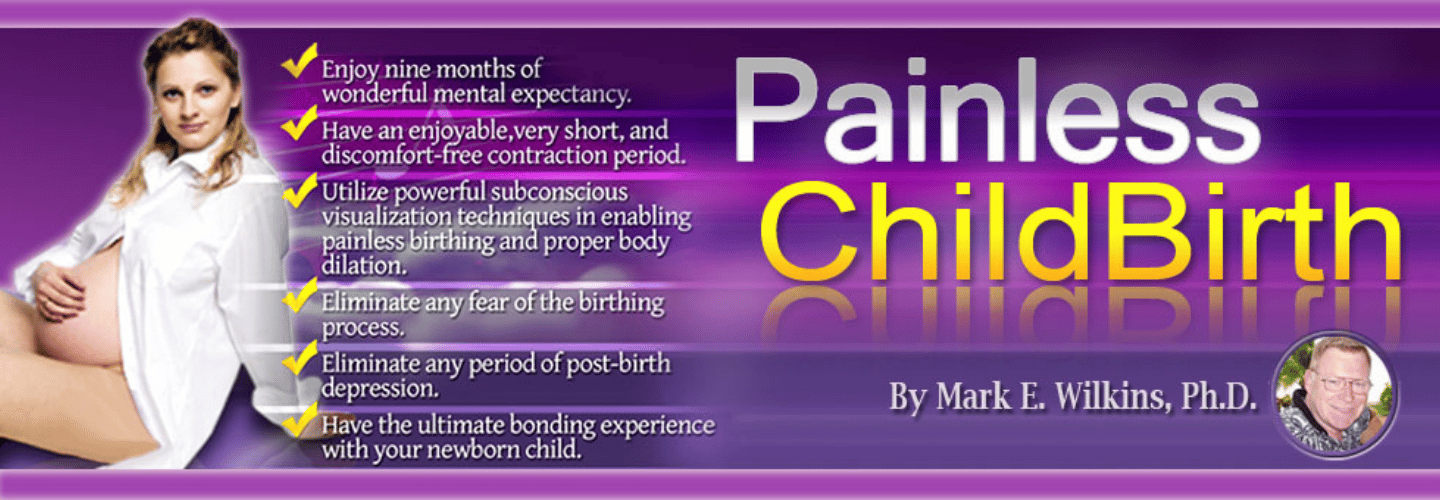
Discover the secrets behind achieving a painless hypnobirthing delivery through a detailed set of techniques designed to enhance relaxation, empowerment, and positivity during labor. From visualization methods to fear release strategies, these 10 techniques offer a holistic approach to birthing that aims to transform the experience into one that is serene and empowering. By exploring these proven methods, mothers can access the potential within themselves to navigate childbirth with confidence and ease.
Relaxation Techniques
Utilizing a variety of relaxation techniques is essential in the practice of Hypnobirthing to cultivate a calm and focused state during labor. Deep breathing, a fundamental component of relaxation in Hypnobirthing, helps mothers manage pain and stay centered during contractions. By focusing on slow, deep breaths, women can increase oxygen flow, reduce stress, and promote relaxation throughout the birthing process.
Visualization is another powerful tool in Hypnobirthing, where expectant mothers create mental images of a peaceful birth experience. By picturing a positive outcome and envisioning a smooth labor, women can alleviate anxiety and enhance feelings of confidence and control. Affirmations, positive statements repeated during labor, further reinforce a woman's belief in her body's ability to give birth naturally and without excessive pain.
Progressive muscle relaxation, a technique involving the tightening and releasing of muscle groups, helps release physical tension and promote a sense of calmness. By systematically relaxing the body from head to toe, mothers can ease discomfort and allow for a smoother labor experience. Incorporating these relaxation techniques in Hypnobirthing empowers women to approach childbirth with a sense of readiness and tranquility.
Calm Birth Environment
Establishing a serene and conducive birth environment is pivotal for promoting relaxation and comfort during labor, encompassing elements such as quiet surroundings, appropriate lighting, and supportive tools.
Creating a calm birth environment involves ensuring the space is quiet, safe, and private, allowing the laboring individual to focus inward and relax. Factors like lighting, music, and temperature also play a significant role in promoting comfort during labor, helping to maintain a soothing atmosphere.
Utilizing soft furnishings, comfortable clothes, and support tools such as birthing balls or massage aids in creating a calming birth space. Engaging in relaxing activities like deep breathing exercises, visualization, or considering water immersion can help manage pain and enhance relaxation.
A calm birth environment supports the activation of the parasympathetic nervous system, which reduces stress and tension, promoting a smoother labor experience. By prioritizing a tranquil setting, individuals can optimize their birthing experience by harnessing the power of relaxation and pain management techniques.
Positive Affirmations

Incorporating positive affirmations into the practice of Hypnobirthing offers a significant tool for transforming negative perceptions about childbirth into empowering beliefs. These affirmations, when repeated daily, play an essential role in instilling confidence, reducing fear, and fostering a positive mindset towards labor.
By focusing on trust in the body's natural ability to birth and emphasizing relaxation, positive affirmations help women embrace the idea of childbirth as a beautiful and natural process. Through the practice of replacing doubts with affirmations, women can cultivate a sense of calm and readiness for the birthing experience.
Additionally, positive affirmations in Hypnobirthing have been shown to boost self-esteem, reduce anxiety levels, and ultimately enhance the overall birthing journey. By internalizing these affirmations, women can empower themselves to approach labor with a sense of strength and positivity, paving the way for a more comfortable and fulfilling birthing experience.
Visualization Methods
Visualization methods play a pivotal role in enhancing the Hypnobirthing experience by allowing mothers to create mental images of a serene and empowering birth journey. When it comes to visualization techniques for a calm birth experience, consider the following:
- Creating a Safe Space: Imagining a peaceful and safe birthing environment can help mothers feel secure and relaxed during labor.
- Smooth Descent Visualization: Visualizing the baby descending smoothly through the birth canal can aid in reducing fear and anxiety, promoting a sense of ease.
- Positive Outcome Imagery: Picturing a positive outcome, such as holding your newborn baby, can instill confidence and optimism throughout the birthing process.
- Enhancing Relaxation: Visualization aids in promoting relaxation, helping mothers to manage pain perception effectively and maintain a sense of control during childbirth.
Regular practice of these mental images can significantly contribute to the effectiveness of pain management techniques in a Hypnobirthing delivery.
Breathing Exercises

To enhance the relaxation and pain management benefits of a Hypnobirthing experience, mastering effective breathing techniques is essential during labor.
Deep breathing exercises play a vital role in achieving relaxation, reducing stress, and managing pain. Controlled breathing techniques help regulate oxygen flow, calming the mind and promoting focus and control.
Diaphragmatic breathing, in particular, aids in releasing tension, increasing oxygen to muscles, and facilitating a smoother birthing process. The breathing patterns adopted during labor can greatly influence the body's response to pain, ultimately promoting a more comfortable and peaceful delivery experience.
Rhythmic breathing techniques are especially beneficial, assisting in maintaining a sense of calm, centeredness, and attunement to the body's natural birthing rhythms. By incorporating these breathing techniques into your Hypnobirthing practice, you can optimize your birthing experience and empower yourself for a more relaxed and manageable delivery.
Progressive Muscle Relaxation
Progressive Muscle Relaxation offers a multitude of benefits for expectant mothers preparing for childbirth.
Understanding the steps involved in this technique can greatly aid in reducing tension and promoting relaxation during labor.
Muscle Relaxation Benefits
Begin a journey towards enhanced relaxation and pain management during childbirth by delving into the profound benefits of Muscle Relaxation through Progressive Muscle Relaxation techniques. Progressive Muscle Relaxation offers a range of advantages for individuals preparing for childbirth:
- Reduction of Stress: By systematically tensing and relaxing muscle groups, stress levels diminish, promoting a calmer mindset.
- Enhanced Body Awareness: Through focusing on different muscle groups, individuals develop a heightened sense of their body, aiding in relaxation.
- Improved Childbirth Experience: Muscle relaxation techniques help in reducing physical discomfort, fostering a more positive birthing encounter.
- Partner or Professional Guidance: Whether practiced independently or with support, Progressive Muscle Relaxation can be tailored to individual preferences for best results.
Incorporating these benefits into a Hypnobirthing practice can lead to effective pain management and a more empowering birthing journey.
Steps for Muscle Relaxation
Starting on the journey of Muscle Relaxation involves systematically engaging and releasing tension in different muscle groups to enhance relaxation and reduce stress levels effectively.
Progressive Muscle Relaxation is a technique where each muscle group is tensed and then relaxed, helping to release tension and promote deep relaxation by increasing awareness of muscle tension.
By focusing on one muscle group at a time, this method can effectively reduce overall stress and anxiety levels during labor. This proven technique not only alleviates physical discomfort but also aids in achieving a calm state of mind.
Regular practice of Progressive Muscle Relaxation can enhance muscle control, reduce pain perception, and ultimately contribute to a pain-free hypnobirthing delivery.
Practice Muscle Relaxation Techniques
Embrace the art of deep relaxation by incorporating muscle relaxation techniques into your daily routine, fostering a calm and stress-free approach to labor preparation. Progressive Muscle Relaxation, a key component of Hypnobirthing Techniques, offers a plethora of benefits for a painless delivery:
- Tension Release: Sequentially tensing and relaxing muscle groups helps release tension, reducing stress and anxiety.
- Muscle Comfort: By focusing on individual muscle groups, this technique aids in managing muscle tension during labor.
- Pain Management: PMR teaches the body to recognize and release tension, assisting in pain management during delivery.
- Skill Development: Regular practice of Progressive Muscle Relaxation enhances the skill of deep relaxation, facilitating coping with discomfort in labor.
Warm Water Therapy
Warm water therapy offers a multitude of benefits for a comfortable hypnobirthing delivery. This technique provides natural pain relief, promotes relaxation, and can lead to a more satisfying birthing experience.
Learning how to prepare and understanding safety precautions are key aspects to take into account when utilizing warm water therapy during labor.
Benefits of Warm Water
Immersing in water during labor provides a natural and effective method for pain relief and relaxation, facilitating a smoother hypnobirthing delivery process. Here are the benefits of warm water therapy:
- Natural Pain Relief: Warm water therapy, like water birth, offers a gentle way to alleviate labor pains.
- Relaxation: Immersion in warm water can help reduce the intensity of contractions and promote a sense of calmness.
- Improved Blood Flow: Warm water aids in increasing blood circulation, supporting the body's natural pain management mechanisms.
- Reduced Medical Interventions: Water immersion during labor is associated with a decreased need for medical interventions and pain medication.
The buoyancy and warmth of water create a comforting environment, allowing women to feel more at ease throughout the birthing process.
How to Prepare
Preparing for warm water therapy during labor involves setting up a soothing environment conducive to relaxation and pain relief. Proper childbirth education on water birth and relaxation techniques is essential for a comfortable birth experience.
Creating a serene atmosphere with dim lighting, calming scents, and soft music can enhance the effectiveness of warm water immersion. It is vital to make sure the water temperature is ideal for relaxation and to have necessary supplies within reach.
Practicing breathing exercises and mindfulness techniques beforehand can help in maximizing the benefits of water therapy. By preparing both mentally and physically for water immersion, mothers can effectively manage pain and achieve a more comfortable birthing process.
Safety Precautions
Adhering to safety precautions is essential when incorporating warm water therapy for pain relief during labor, guaranteeing the best benefits and well-being for both mother and baby. When considering warm water therapy for a natural birth, it is vital to prioritize safety measures to optimize the experience.
Here are some key safety precautions to keep in mind:
- Constant Monitoring: Ensure continuous supervision by a trained professional during warm water immersion.
- Water Temperature Control: Maintain the water temperature within safe limits to prevent overheating or chilling.
- Hygiene Maintenance: Regularly clean and disinfect the water birthing pool to reduce the risk of infections.
- Emergency Preparedness: Have a well-defined plan in place for any unforeseen circumstances during the warm water therapy session.
Massage Techniques
Massage techniques play a pivotal role in Hypnobirthing by fostering muscle relaxation and a sense of calmness during labor. Techniques such as light touch massage and sacral massage are particularly effective in promoting relaxation and aiding in pain management during childbirth.
The application of T stroke and arm stroke massages can help alleviate tension, thereby enhancing relaxation for mothers in labor. By increasing blood flow to the pelvic area, these massages support a smoother and more comfortable birthing experience.
Additionally, incorporating massage into the labor process can trigger the release of endorphins, which are natural pain-relieving hormones, leading to a more pain-free delivery. Furthermore, massage therapy proves to be a valuable tool in Hypnobirthing for reducing stress, anxiety, and muscle tension, ultimately enhancing overall comfort and relaxation during childbirth.
Hypnosis for Pain Management

Utilizing hypnosis for pain management in Hypnobirthing is a powerful technique that fosters deep relaxation and diminishes fear and anxiety, ultimately enhancing the birthing experience. Hypnosis for pain management offers a natural and effective way to reduce discomfort during labor without the use of medication. Here are some key points to ponder:
- Deep Relaxation: Hypnosis induces a state of deep relaxation, allowing the birthing person to remain calm and focused during labor.
- Reduce Fear and Anxiety: By altering perceptions of pain through positive affirmations and visualization, hypnosis helps in reducing fear and anxiety associated with childbirth.
- Endorphins Release: Hypnosis triggers the release of endorphins, the body's natural pain relievers, promoting a sense of well-being and pain relief.
- Pain Management without Medication: Through hypnosis, individuals can effectively manage pain without the need for pharmaceutical interventions, leading to a more comfortable birthing process.
Fear Release Strategies
Fear release strategies are essential in Hypnobirthing to help mothers address and release birth-related fears. Techniques such as breathing exercises and visualization methods play an important role in softening anxieties during childbirth.
Breathing Techniques for Fear Release
Breathing techniques in Hypnobirthing play an essential role in alleviating apprehensions and fostering a calm state of mind during childbirth. These techniques are vital for fear release and promoting relaxation, leading to a pain-free birth experience.
Here are some effective breathing strategies to help manage fears and anxieties:
- Rhythmic Breathing: Involves breathing in a steady, consistent pattern to calm the mind and body.
- Deep Breathing: Inhaling deeply through the nose and exhaling slowly through the mouth helps release tension and reduce stress.
- Controlled Breathing Patterns: Practicing specific breathing rhythms aids in maintaining focus and composure during labor.
- Focused Breathing: Directing attention to the breath helps in staying present and easing fears, facilitating a smoother childbirth process.
Visualization Methods for Fears
Visualization techniques in Hypnobirthing are powerful tools for releasing fears and promoting a positive mindset during childbirth. By incorporating methods like guided imagery and mental rehearsal, expecting mothers can cultivate a sense of calm and confidence for labor.
Visualizing a smooth and peaceful birth experience helps reduce stress, enabling relaxation during delivery. Using visual cues such as imagining a serene, safe space can effectively manage fears and enhance mental preparedness for the birthing process.
Daily practice of visualization exercises aids in building self-assurance and alleviating concerns associated with childbirth, ultimately contributing to a more positive and calm birth experience.
Frequently Asked Questions
What Is the Most Painless Birth Method?
When considering the most painless birth method, the focus shifts to the mind-body connection, relaxation techniques, breathing exercises, visualization methods, and positive affirmations. Incorporating these elements can greatly reduce pain perception during labor and delivery.
What Is the Most Less Painful Way to Give Birth?
When considering a less painful childbirth experience, natural techniques such as relaxation methods, breathing exercises, and visualization strategies play a vital role. By fostering a strong mind-body connection, individuals can alleviate discomfort during labor.
These practices not only promote a sense of calm but also empower mothers to navigate the birthing process with greater ease. Embracing these holistic approaches can contribute to a more comfortable and positive birthing experience.
How Can I Deliver a Baby Without Pain?
When aiming to deliver a baby without pain, incorporating breathing techniques, visualization exercises, and relaxation techniques can be highly beneficial. Partner support and hypnobirthing affirmations also play an essential role in creating a calm and positive birthing experience.
Can You Have Pain Relief With Hypnobirthing?
Hypnobirthing is effective in providing pain relief during childbirth through a combination of mind-body techniques such as relaxation, breathing exercises, and visualization.
By utilizing the mind-body connection, women can reframe their perception of pain and approach labor with confidence.
The relaxation techniques taught in hypnobirthing empower women to manage labor sensations in a calm and controlled manner, potentially leading to a pain-free delivery experience.
Conclusion
Incorporating relaxation techniques, positive affirmations, visualization methods, breathing exercises, warm water therapy, massage techniques, hypnosis for pain management, and fear release strategies can contribute to a painless hypnobirthing delivery.
Creating a calm birth environment is essential to empower mothers during labor.
By utilizing these 10 best techniques, mothers can tap into their innate abilities and approach childbirth with confidence, comfort, and control.




